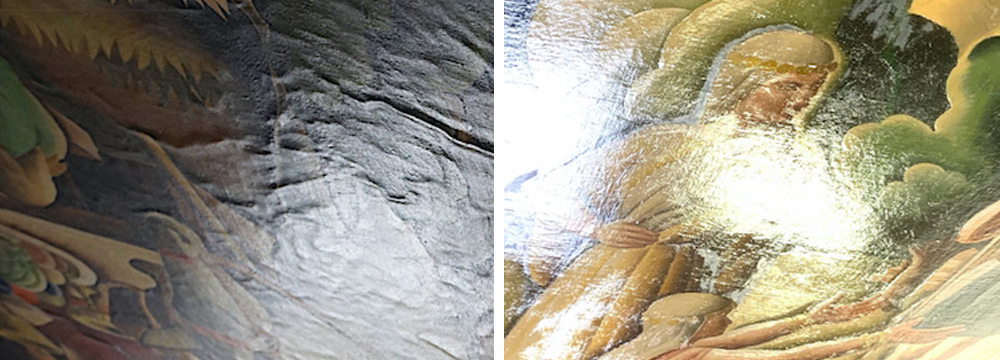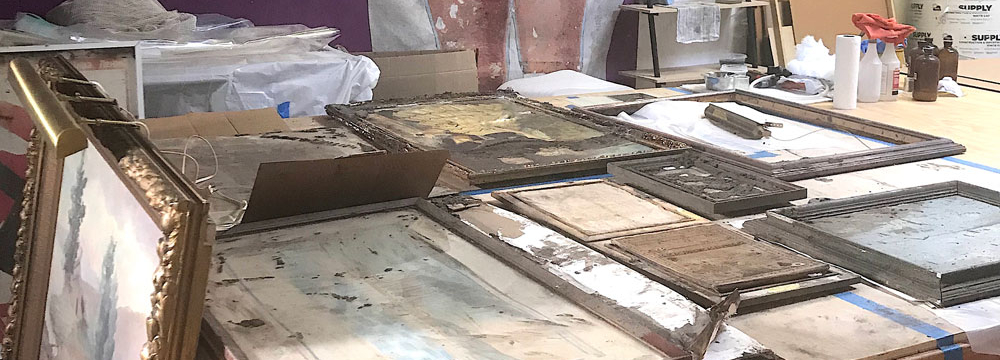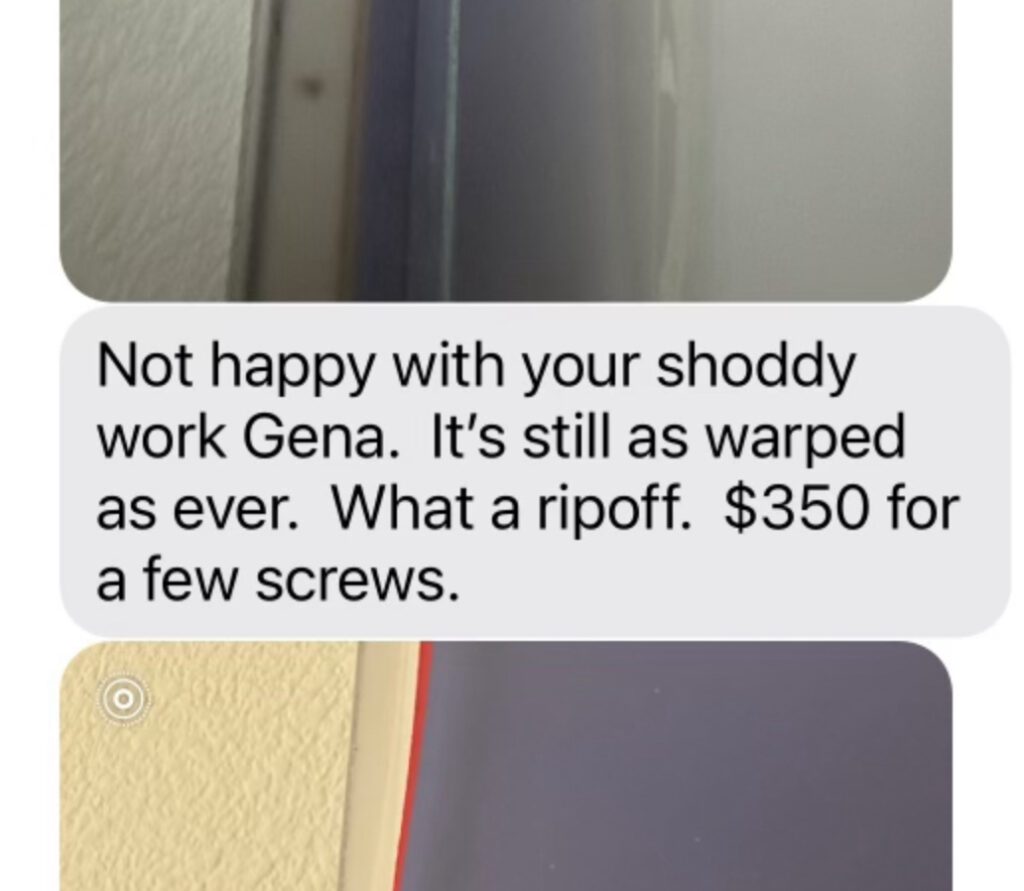This blog post has been syndicated at https://www.expertclick.com/NRWire/Releasedetails.aspx?id=302112
What does it mean that this article is “ syndicated”? See end of article for explanation. BTW, that is not a cigarette in my hand, lol. I don’t smoke. Its for measuring the pH of paper.
BTW, that is not a cigarette in my hand, lol. I don’t smoke. Its for measuring the pH of paper.
What is your collectible worth? OK, time for a teaching moment regarding several lessons. On this project and with this client, I consulted with her (a valuable service) on what her purposes or objectives were with the artwork (she wants to sell it)… but there was a ripple in the paper. Her opinion is that it should bring about $50,000 at auction but she can’t see getting the best price with the warp in the paper. I told her that I would have to take it out of its plexiglass frame in order to determine what the problem is. That seemed OK as she was also open to putting a new frame on it since this old plexiglass box frame was coming apart at the seams. I picked up the artwork at her house (valuable service).
When I took the artwork out of the frame at our lab, I found out that ripples in the paper would occur because the artwork was not mounted down to a solid support or a backing board. In other words, it was in virgin condition as the artist provided it to the art gallery. The artist and the art gallery had also decided on the framing which was designed, specific, and was kind of cool. Just the same, I got an estimate to have a new plexiglass box frame made, and I could not find anyone who would do it exactly like the old frame, nor with the more robust materials of the old frame. I also found out that a new cheaper quality frame, which was not as stylish, would cost quite a bit of money.
So, over the phone, I consulted again with the client about the value of letting me repair the original frame, and to not mount the artwork to remove ripples, because with the artwork in original vintage, virgin condition, and the original vintage frame, as chosen by the artist and the gallery, that this combination would make it highly desirable at auction, and might even result in a premium or higher price because of its completely original nature. so I fixed the plexiglass box frame and reinstalled the artwork, unmounted with ripples back into the frame. Then we hand delivered it back to the residence of the owner, here was her response…
I reminded her over the phone that we had gone over these details as they came up, and that every step along the way we had made decisions that would be to her advantage with the resale of the artwork. While I am not an appraiser, I told her, mounting the artwork to a board to remove the ripples and not using the original frame could have impacted the sale at auction by at least 50% less.… which was only a guess.
Her response? “I am not going to believe that ripples or distortions occur in paper just because the weather changes! What do you think I am, stupid?” And then she hung up on me.
Well, there’s no answer to that last question that’s going to calm her down or change her mind so…
But if her estimate of $50,000 is truly the amount that this artwork could bring at auction, then I may have saved her $15-$20,000 reduction in the sales price. There are lots of reasons why something sells for more or less at an auction, but very often the condition of the artwork is a factor that can cause the auction sales to be exciting… or to fall flat.
I think I’ll end this lesson right here… otherwise…
Questions about your artwork’s maintenance, framing, care, restoration, shipping, display, storage, etc? Call Scott M. Haskins or Virginia Panizzon at 805 564 3438
Article Syndication
This blog post has been syndicated at ExpertClick.com What does it mean that this article is “ syndicated”?
Its a bit of a coup to get an article syndicated, and its certainly prestigious, as additional “proof” that the info and the author are considered far and wide authoritative and an expert in the field. So, enjoy and trust our content!! This article was syndicated for USA national redistribution.
When something is published, usually by a news source, and is made available through different venues for redistribution then it is said to be syndicated. Publications that are syndicated are usually considered of value as being from an expert, educational, new worthy or valuable for wide popular interest. See syndication page at the renowned publicity site: https://www.expertclick.com/https://www.expertclick.com/NRWire/Releasedetails.aspx?id=302112
This website’s syndication included:
1) Included in the ExpertClick Press Room as a ‘press release.’ (different than a ‘news release’)
2) Included in the ‘Speaker Bureau Platform Page.’
3) Shown on the front page of ExpertClick, in rotation with other most recent posts.
4) Shown in the ‘News Release Results page.’
5) Included on optimized for searches on all my topics of expertise.
6) Shown via RSS linked from the Press Room. (A specific way news is actively distributed within the industry)
7) Shown in the full RSS feed from ExpertClick. (Another, different specific way news is actively distributed within the industry)
8) Syndicated to LexisNexis.com As of 2006, the company had the world’s largest electronic database for legal and public-records related information, distributor of academic content and expert opinion.
This article has been syndicated at https://www.expertclick.com/NRWire/Releasedetails.aspx?id=302112












Scott, your post on art restoration provides valuable insights into the intricacies of balancing authenticity and market value. The client’s skepticism about paper distortions is obviously all about her level of education. The syndication of your article says volumes about your authoritative standing. Educating readers about the impact of restoration choices on auction sales demonstrates transparency and expertise is SO VALUABLE. Thanks so much.
Thanks for recognizing these important lessons Barry.
Wow, your expertise in art restoration is evident in your thoughtful approach to preserving both the original vintage condition and potential resale value. The client’s skepticism about paper distortions is all about the importance of communication in your field. Your choosing between restoration options (chrging her for work) and educating clients about potential auction impacts (which meant less $ for you) showcases your professionalism, well done. An informative and well-presented post on the nuances of expanded expertise in professional art restoration.
Thanks for your comment Jake. In the end, I have to be able to live with myself… And I’d rather not have a lot of long-term baggage. The reason I’ve posted about it is because I believe there’s something for us all to learn and think about from this example.
Scott, the vintage condition and market value issues of your article are very interesting, as a collector. I can see why your articles get syndicated. Your decision to educate readers about the impact of restoration choices on auction sales demonstrates a commitment to transparency. Well done.
Thanks for your trust Vlad.
Wow, original condition and resale value.Intersting discussion for a collector. I never thought it was such an issue to be aware of. Clear communication, though well intended won’t help a person who is not listening, obviously. But your point is well-articulated and its an informative post. Thanks
Hi Gunther, thanks for your comment. Communication is all about people skills and seeking to understand the other person. But as alert as one might be about the needs of the other person, there’s a lot of hidden “issues” that can get in the way… And we have to give people “space” to be stupid.
Your client’s lack of understanding about the distortions in the paper seem weird. Isn’t that something everybody knows along with the fact that wood cracks and arms with humid changes?! It was a good example of people not following good advice to their detriment.
Hello Archie, when I made the statement I thought it would be a clear explanation that she would see is squarely in her favor. Her response was a big surprise for me too.
Your expertise in your field is pretty evident in this story. But, more importantly, your delicate balance between preserving the artwork’s original vintage condition and considering resale value for the client’s possession is a testament to your professionalism. The client’s skepticism about paper distortions in changing weather doesn’t seem like that would be a belief or something a collector would say… but then again, who can predict what people are going to say?
Thanks for your comment Alexa, its a very important part of knowing value… to understand condition.